Discover Pecorino Cheese’s Rich and Bold Flavor
Imagine yourself in a charming Italian village. The smell of fresh bread and aged cheese fills the air. When you take a bite of Pecorino, the tangy flavors take you to Sardinia’s green hills. This is the magic of Pecorino cheese, a true Italian treasure loved for centuries.
Pecorino cheese is made from sheep’s milk. It has a unique flavor that stands out among Italian cheeses. Its crumbly texture and sharp taste make it a hit among cheese fans and chefs. Whether you sprinkle it on pasta or enjoy it alone, Pecorino offers a unique taste experience.
Exploring Pecorino, you’ll learn about its rich history and the effort put into making it. From the ancient pastures where sheep roam to the skilled cheesemakers, each step adds to the cheese’s unique character. With several varieties having Protected Designation of Origin status, Pecorino is the peak of Italian cheesemaking tradition.
Table of Contents
The Origins and History of Pecorino Cheese
Pecorino cheese has a long history, dating back to ancient Roman and Greek times. It has been a key part of Mediterranean food for centuries. Over time, it has evolved into different types found across Italy.
Ancient Roman and Greek Roots
Pecorino cheese has its roots in ancient times. It was a vital part of the Roman diet. Roman soldiers loved it because it lasted long and had lots of energy.
Evolution of Pecorino Production in Italy
As time went on, Pecorino cheese spread across Italy. Each area made its own special version. Today, about 40% of Italian cheese comes from sheep’s milk. The Cugusi Gran Riserve Pecorino has won many awards, showing its quality.
Traditional Sheep Breeds Used for Pecorino
The special taste of Pecorino comes from certain sheep breeds. In places like Montepulciano, sheep eat special grasses. This makes the cheese taste amazing.
| Pecorino Fact | Detail |
|---|---|
| Aging Process | 20 days to 18 months |
| Pecorino Romano Production | Over 90% in Sardinia |
| PDO Status | Earned under EU law |
The skills of Sardinian cheese makers have helped Tuscany a lot. This has made Pecorino cheese even more popular. Events like the “cacio al fuso” cheese rolling in Pienza show how much it’s valued.
Understanding Pecorino Cheese Varieties
Pecorino cheese comes in many flavors and textures. You’ll find several varieties, each with its own unique characteristics. The most well-known types include pecorino romano, pecorino sardo, and other artisanal cheese variations.
Pecorino Romano, originating from Rome, is now produced in Sardinia, Lazio, and Tuscany. It’s known for its sharp, salty flavor that intensifies with age. This cheese is perfect for grating over pasta dishes or enjoying on its own.
Pecorino Sardo, hailing from the island of Sardinia, offers a less salty profile with a richer taste compared to its Roman counterpart. It’s an excellent choice for those who prefer a milder flavor in their cheese.
Pecorino Toscano, crafted in the Tuscany region, presents a gentler taste and is less salty than Pecorino Romano. This variety is ready for consumption after aging and works well as both a table cheese and a grating cheese.
For a unique twist, try Pecorino Siciliano from Sicily. This semi-hard white cheese boasts a tangy, slightly spicy flavor. Some variations even include pistachios or other spices, creating a distinctive taste profile.
| Variety | Origin | Flavor Profile | Best Use |
|---|---|---|---|
| Pecorino Romano | Rome, Sardinia, Lazio, Tuscany | Sharp, salty | Grating, table cheese |
| Pecorino Sardo | Sardinia | Less salty, rich | Pesto, pairing with wine |
| Pecorino Toscano | Tuscany | Mild, sweet | Table cheese, grating |
| Pecorino Siciliano | Sicily | Tangy, spicy | Pairing with olives, honey |
Each Pecorino variety has earned Protected Designation of Origin (PDO) status in the EU, ensuring its authenticity and quality. Whether you’re a cheese connoisseur or a curious food lover, exploring these Pecorino varieties will take your taste buds on a flavorful journey through Italy’s diverse cheese-making traditions.
The Unique Flavor Profile of Pecorino
Pecorino is an Italian cheese with a rich history. It has a distinct taste that makes it stand out. This cheese gets better with age, loved by many.
Tasting Notes: From Mild to Sharp
When you try Pecorino, you’ll find it tangy and salty. It also has a hint of nuttiness. As it ages, its flavor gets stronger and more complex.
The aging process can last from 8 to 12 months. This makes it perfect for grating over pasta or enjoying alone.
Factors Influencing Pecorino’s Taste
Several things affect Pecorino’s taste:
- Aging process
- Production region (Lazio, Sardinia, or Tuscany)
- Sheep’s diet
- Variety (Sardinian, Lazio, Sardo, Toscano, or Siciliano)
Each type of Pecorino has a special status. This ensures it’s authentic and of high quality. For example, Pecorino Toscano is ready after 20 days or 3 months for aging.
Pairing Pecorino with Wine and Other Foods
Pecorino pairs well with many flavors. Here are some great combinations:
| Pecorino Pairing | Recommended Companion |
|---|---|
| Wine | Italian reds like Chianti |
| Meats | Cured meats such as prosciutto |
| Fruits | Fresh pears or figs |
| Condiments | Honey or fruit preserves |
These pairings bring out Pecorino’s best flavors. It’s great for antipasti and wine tastings. Remember, once cut, Pecorino stays good for three to four weeks in the fridge.
Pecorino Cheese Production Process
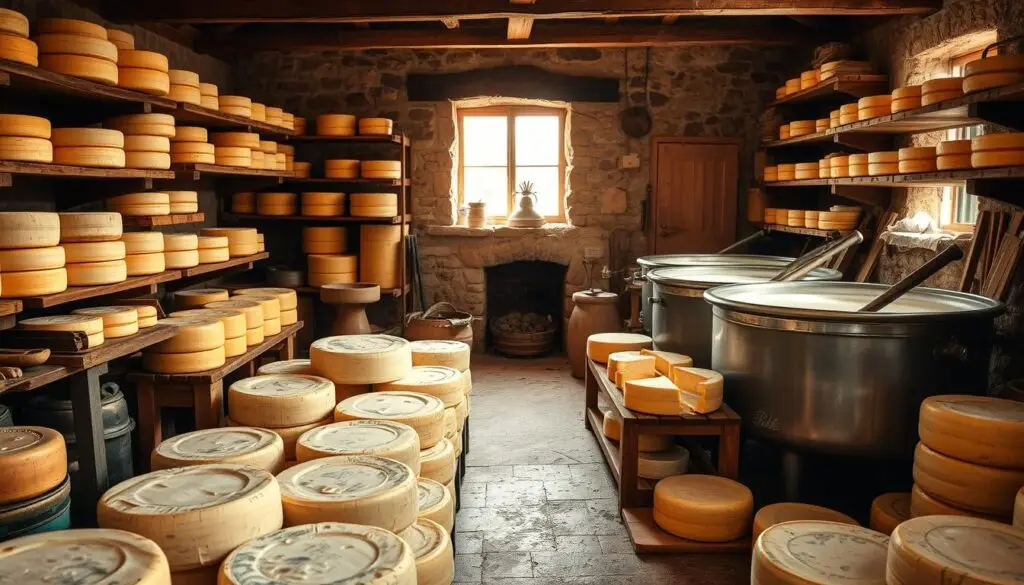
Pecorino, a favorite sheep’s milk cheese, is made with great care. It starts with fresh milk being turned into curds using rennet. This step is key for the cheese’s texture and taste.
Next, the curds are molded and pressed to get rid of extra moisture. This makes the cheese firm, a hallmark of hard cheese. Then, the cheese ages, a vital part of making artisanal cheese.
The aging time changes based on the Pecorino type:
- Pecorino Toscanello: Minimum 20 days
- Pecorino Romano: 8-12 months
As it ages, Pecorino gets its unique flavor. The longer it ages, the sharper and more intense it tastes. This turns a mild cheese into a robust, flavorful one that cheese lovers adore.
Every step in making Pecorino adds to its special qualities. From choosing the best sheep’s milk to aging it carefully, cheesemakers put their skill into every piece. This results in a cheese that shows off traditional Italian craftsmanship.
Nutritional Benefits of Pecorino Cheese
Pecorino cheese is a favorite in Italy, made from sheep’s milk. It’s not just tasty; it’s also packed with nutrients. This cheese offers health benefits that might surprise you.
Protein and Calcium Content
Pecorino is a great source of protein and calcium. A small serving has about 7 grams of protein and 25% of your daily calcium. It’s perfect for keeping bones and muscles strong.
Vitamins and Minerals in Pecorino
This Italian cheese is full of important nutrients. It has vitamin A, phosphorus, and zinc. Pecorino Romano, a favorite, also has lots of calcium, magnesium, potassium, and phosphorus.
Considerations for Sodium and Fat Intake
While Pecorino is good for you, eat it in moderation. It has a lot of saturated fat and sodium. Pecorino Romano has 3% to 7% sodium chloride, while Pecorino Sardo has less than 2% sodium.
| Nutrient | Amount per 1 oz (28g) | % Daily Value |
|---|---|---|
| Calories | 110 | – |
| Protein | 7g | 14% |
| Saturated Fat | 7g | 35% |
| Calcium | 250mg | 25% |
| Vitamin A | 400IU | 8% |
Sheep’s milk cheese, like Pecorino, has more conjugated linoleic acid (CLA) than cow’s milk cheese. CLA can help with weight control and has anti-inflammatory effects. Remember, a serving of cheese is about one ounce – roughly the size of three standard dice.
Comparing Pecorino Romano to Other Cheeses
Pecorino Romano is a unique hard cheese in Italian cuisine. It has a special flavor that makes it stand out. Let’s see how it compares to other cheeses, like Parmigiano.
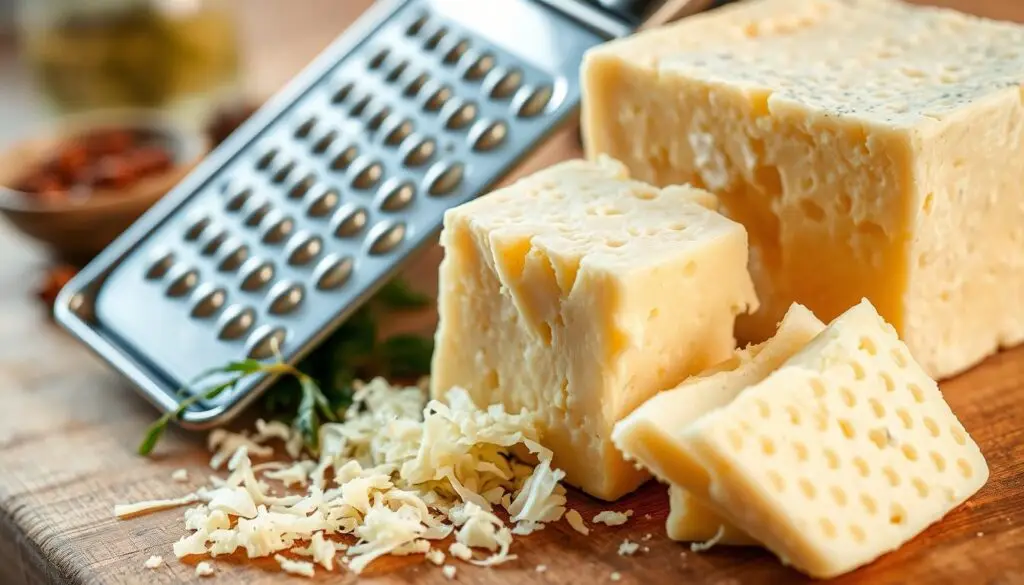
Pecorino Romano and Parmigiano-Reggiano are often compared. They are both hard cheeses great for grating. But, they taste different. Pecorino Romano is made from sheep’s milk, which makes it sharper and saltier. Parmigiano-Reggiano, made from cow’s milk, has a nuttier and more complex taste.
| Cheese | Milk Source | Origin | Aging Period |
|---|---|---|---|
| Pecorino Romano | Sheep | Lazio, Sardinia, Tuscany | 5-8 months |
| Parmigiano-Reggiano | Cow | Emilia-Romagna, Lombardy | 12-36 months |
| Grana Padano | Cow | Po River Valley | 9-20+ months |
The way these cheeses are made is different too. Pecorino Romano gets a special salt treatment for 70 days. This gives it a bold, salty taste. It’s a favorite for those who like strong flavors in their food.
If you’re looking for a Parmigiano substitute, Pecorino Romano is a great pick. It’s perfect for grating over pasta or adding to recipes. The Locatelli brand is well-known in the US for its top-quality Pecorino Romano.
Culinary Uses of Pecorino Cheese
Pecorino cheese is a favorite in Italy. It’s great for both old and new recipes. Chefs and home cooks love it for its versatility.
Traditional Italian Recipes Featuring Pecorino
Pecorino Romano PDO is famous for its role in Italian dishes. It’s essential in spaghetti cacio e pepe, adding a salty, rich flavor. It also makes soups, salads, and veggies taste better.
Grating, Slicing, and Cooking with Pecorino
Grated Pecorino Romano adds depth to many dishes. Sprinkle it on pasta, soups, or roasted veggies. Sliced, it’s great with honey, pears, or figs. Pecorino Toscano melts well, making creamy sauces.
Modern Culinary Applications
Today, chefs are finding new uses for Pecorino. Jamie Kembrey’s roasted broccolini dish highlights its tangy taste. It’s also great in risotto with mushrooms for a rich umami flavor. Some Italian cheeses even have walnuts, pistachios, or truffles added.
| Pecorino Variety | Region | Best Uses |
|---|---|---|
| Romano | Various | Grating, pasta dishes |
| Toscano | Tuscany | Melting, pairing with fruits |
| Sardo | Sardinia | Sharp flavor, aging |
| Siciliano | Sicily | Flavored with peppercorns |
Looking for a Parmigiano substitute or new Italian cheese flavors? Pecorino has a lot to offer for your cooking.
Proper Storage and Preservation of Pecorino
Keeping your Pecorino cheese fresh is key. This hard cheese needs the right conditions to stay delicious for a long time. It’s all about preserving its rich taste and texture.
Put your Pecorino in the fridge’s coolest spot, like the bottom shelves. Keep it between 34-38°F (1-3°C). This stops bacteria and keeps the cheese just right.
Before you serve your artisanal cheese, take it out of the fridge two hours early. Letting it warm up to room temperature makes it taste even better.
Wrapping and Packaging
Use cheese paper or a cotton cloth to wrap your Pecorino. These let the cheese breathe and keep it dry. Beeswax wraps are also great for keeping the right humidity.
| Storage Method | Shelf Life (Opened) | Shelf Life (Unopened) |
|---|---|---|
| Refrigerated (Wrapped) | 3-4 weeks | 2-4 months |
| Refrigerated (Airtight Container) | 4-6 weeks | Up to 6 months |
| Frozen | Several months | Several months |
Good storage keeps your Pecorino tasting great for longer. Follow these tips to enjoy your hard cheese in all your dishes.
The Protected Designation of Origin (PDO) Status
Looking for real Italian cheese? Check for the Protected Designation of Origin (PDO) label. This EU label protects the quality and traditions of cheeses like Pecorino. It makes sure your sheep’s milk cheese comes from certain areas and is made the right way.
PDO Regions for Pecorino Production
Pecorino cheese has several PDO types, each with its own taste. Pecorino Romano PDO is mostly made in Sardinia, with some in Lazio and Tuscany. Pecorino Toscano PDO comes from Tuscany, and Pecorino Sardo PDO is made in Sardinia. These places add to the cheese’s varied flavors.
Quality Control and Authenticity Measures
The PDO system has strict quality rules. For Pecorino, this means using old cheese-making ways and milk from certain sheep. This ensures your PDO Pecorino is real and of the same quality. The system also checks the cheese’s minerals, like calcium and zinc, to meet certain levels.
Importance of PDO for Consumers
The PDO label means you’re getting the real deal. It helps you tell real Italian cheese from fake ones. Choosing a PDO Pecorino supports old traditions and local businesses. Remember, only cheeses with the PDO label are true Italian and of high quality.
FAQ
What is Pecorino cheese?
Pecorino is an Italian cheese made from sheep’s milk. It comes from the Sardinian breed called “Pecora.” It has a tangy flavor and a crumbly texture. The taste and texture vary based on the region, aging, and cheese-making methods.
What are the origins of Pecorino cheese?
Pecorino cheese has ancient roots. It was first made in ancient Rome and Greece. It’s said to be the cheese of Polyphemus, a cyclops from Greek mythology.
What are some popular varieties of Pecorino cheese?
There are several popular Pecorino cheeses. Pecorino Romano is sharp and robust. Pecorino Toscanello is milder and sweeter. Pecorino Fiore Sardo has a subtle, nutty flavor.
What is the flavor profile of Pecorino cheese?
Pecorino cheese tastes tangy and salty with nutty notes. As it ages, the flavor gets sharper and more complex. The taste changes based on aging, region, and the sheep’s diet.
How is Pecorino cheese produced?
Making Pecorino starts with coagulating sheep’s milk with rennet. The curds are molded, pressed, and aged for different periods. This can range from 20 days to 12 months, depending on the type.
What are the nutritional benefits of Pecorino cheese?
Pecorino is rich in protein, calcium, and vitamins. But, it’s also high in saturated fats and sodium. So, it’s best to eat it in moderation, especially if you’re watching your sodium intake.
How does Pecorino Romano differ from Parmesan?
Pecorino Romano is made from sheep’s milk and produced in Lazio, Tuscany, and Sardinia. Parmesan is made from cow’s milk in Emilia Romagna. Pecorino Romano has a shorter aging period and a stronger flavor, making it a good substitute for Parmigiano in many dishes.
How is Pecorino cheese used in cooking?
Pecorino is very versatile in Italian cooking. It’s key in dishes like cacio e pepe, carbonara, and amatriciana. It’s great grated over pasta, sliced for appetizers, or used in risottos. Its salty taste is also great in salads, and it’s delicious on its own or with bread, olives, honey, or jams.
How should Pecorino cheese be stored?
Store Pecorino in the refrigerator’s coldest part (bottom shelves) at 8-10°C (46-50°F). Take it out at least two hours before eating. Wrap it in paper or a cotton cloth when storing. Aged Pecorino (6-12 months) can stay good for weeks or months if stored properly.
What is the Protected Designation of Origin (PDO) status for Pecorino cheese?
Many Pecorino cheeses have PDO status. This ensures their quality and authenticity. PDO regions include Lazio, Sardinia, and parts of Tuscany for Pecorino Romano. Sardinia produces 97% of Pecorino Romano. The PDO status protects traditional cheese-making methods and guarantees the cheese’s quality.

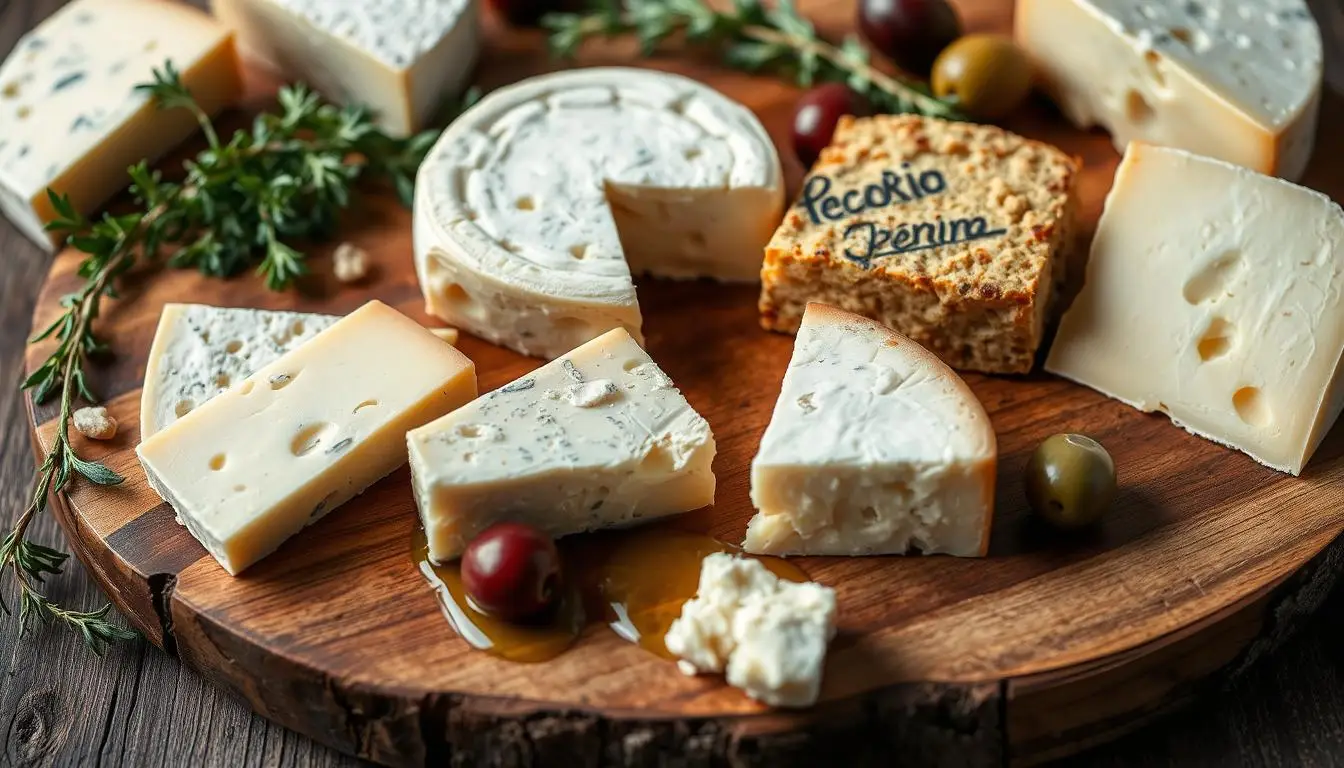
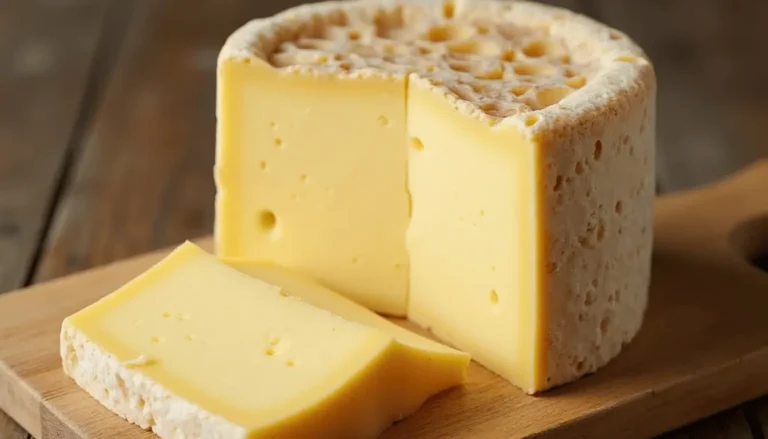
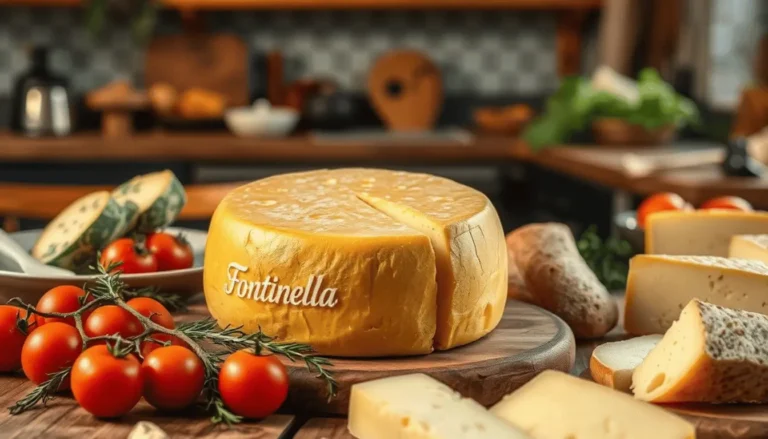




2 Comments
Comments are closed.